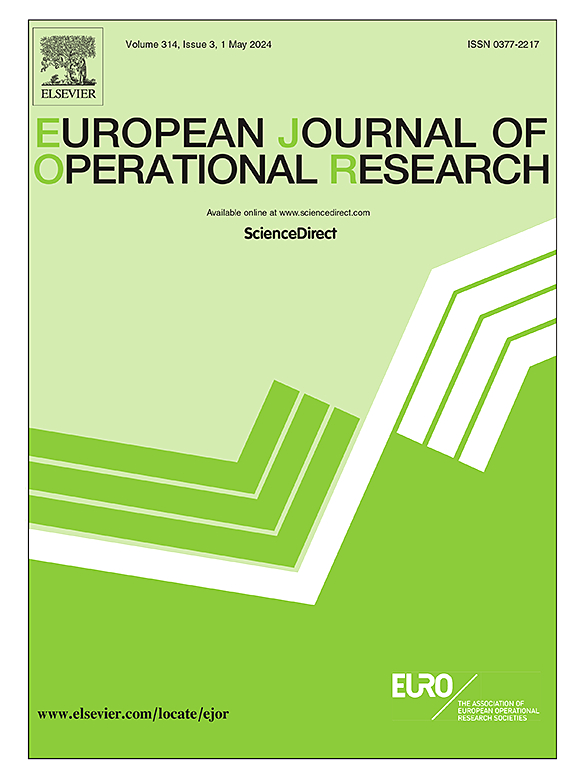最优面积多边形化问题:混合整数线性规划模型
IF 6
2区 管理学
Q1 OPERATIONS RESEARCH & MANAGEMENT SCIENCE
引用次数: 0
摘要
本文描述了通过给定的欧几里得平面上的一组点来求面积最大和最小多边形的方法。这两个问题都是np困难的,在计算几何中很有趣。它们已经被广泛研究,尽管只有最近的文献提出了数学公式,以始终如一地从多达25个点的基准集合中找到实例的最佳解决方案。针对这两个问题,我们提出并比较了8种新的混合整数线性规划模型。其中四个用多边形表示非对称旅行推销员问题的解,而另外四个用对称旅行推销员问题的表示。其中六个模型选择三角形来计算多边形的面积,另外两个模型选择子多边形。对基准集合的计算分析表明,我们的一个新公式可以用最多50个点一致地解决大多数基准实例。我们的建议的成功之处是一个线性系统来选择点集的三角剖分,三角剖分的分区来覆盖多边形的内外面积,以及多边形的表示作为不对称旅行推销员问题的解。本文章由计算机程序翻译,如有差异,请以英文原文为准。
Optimal area polygonisation problems: Mixed integer linear programming models
This paper describes approaches to finding polygons with maximum and minimum area through a given set of points on the Euclidean plane. Both problems are NP
求助全文
通过发布文献求助,成功后即可免费获取论文全文。
去求助
来源期刊

European Journal of Operational Research
管理科学-运筹学与管理科学
CiteScore
11.90
自引率
9.40%
发文量
786
审稿时长
8.2 months
期刊介绍:
The European Journal of Operational Research (EJOR) publishes high quality, original papers that contribute to the methodology of operational research (OR) and to the practice of decision making.
 求助内容:
求助内容: 应助结果提醒方式:
应助结果提醒方式:


